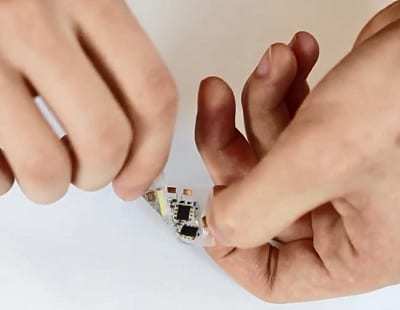New electronic tattoo-like gadgets are giving an entirely new look to the wearables industry.
Although most people think of devices such as smartwatches when it comes to wearable technology, these gadgets are taking an entirely new form with the recent creation of electronic patches that are somewhat like tattoos.
These tattoo-like patch warables have sensors embedded within them in order to provide health tracking.
While it is believed that this new type of wearable technology can be exceptionally helpful in the monitoring – or even the improvement – of a person’s wellbeing, the hadn’t previously been very easy to manufacture until now. The concept of these wearables has been around for a while, but until now, they have been too challenging and expensive to make, which has kept them away from the consumer market.
A team of researchers has now come up with a way to make this different kind of wearable technology affordable.
 The research team is from the University of Texas at Austlin’s Cockrell School of Engineering. They have come up with an innovative new way to inexpensively produce highly complex wearables in the form of patches that can track the vital functions of the body. These patches could potentially provide even better monitoring and results than traditional heart monitors.
The research team is from the University of Texas at Austlin’s Cockrell School of Engineering. They have come up with an innovative new way to inexpensively produce highly complex wearables in the form of patches that can track the vital functions of the body. These patches could potentially provide even better monitoring and results than traditional heart monitors.
The new method of manufacturing this wearable tech comes in the form of a kind of “cut-and-paste” process that dramatically slashes manufacturing costs. In fact, it would make it possible to create a new patch in as little as 20 minutes, instead of the previous manufacturing time that could have taken up to several days for a per device.
These wearable technology patches are made up of ultra thin layers that are very flexible and will adhere to the skin in the same way as temporary tattoos that are worn by children and at festivals and other special events. That said, they are electronic and highly complex, with sensors that allow for the collection and transmission of the vital signals of the body, such as hydration level, heart rate, muscle movement, brain activity, and temperature. Moreover, the reduced manufacturing speed and the cost of about $1 to make them will make them easy to replace within the disposable market.

